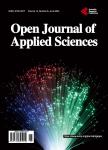The Frequency of rs1799889 in Plasminogen Activator Inhibitor Type-1 Gene in Sudanese Type 2 Diabetic Patients, Gezira State, Sudan, 2020-2021
The Frequency of rs1799889 in Plasminogen Activator Inhibitor Type-1 Gene in Sudanese Type 2 Diabetic Patients, Gezira State, Sudan, 2020-2021作者机构:Department of Hematology and Immunohematology Medical Laboratory Science University of Gezira Wad Madani Sudan Department of Clinical Laboratory Sciences Faculty of Applied Medical Sciences Al Jouf University Sakakah Saudi Arabia Department of Histopathology and Cytology Medical Laboratory Science University of Gezira Wad Madani Sudan Department of Molecular Biology National Cancer Institute University of Gezira Wad Medani Sudan
出 版 物:《Open Journal of Applied Sciences》 (应用科学(英文))
年 卷 期:2022年第12卷第2期
页 面:165-174页
学科分类:1002[医学-临床医学] 100201[医学-内科学(含:心血管病、血液病、呼吸系病、消化系病、内分泌与代谢病、肾病、风湿病、传染病)] 10[医学]
主 题:4G/5G Polymorphism Diabetic Mellitus Type 2 and PAI-1 Gene
摘 要:Background and Objectives: The cornerstone of the regulation fibrinolytic system is plasminogen activator inhibitor type-1. The 4G/5G polymorphism in the PAI-1 gene is a key genetic predictor of increased plasma levels which is the most polymorphism associated with cardiovascular complications. The 4G carriers have six times higher PAI-1 levels than 5G carriers leading to an increase in the level of plasma inhibitor by about 25% more than 5G allele (wide type). Type 2 diabetes presents symptoms of hypercoagulability and hypofibrinolytic system that lead to contribute in the atherothrombosis and then the myocardial infarction (MI). These findings supported the hypothesis that there is a link between diabetes patients and this SNP. There is no data about the prevalence of this allele in Sudanese diabetic patients with type 2 and the allele differs in prevalence according to ethnicity, for these reasons, the aim of this study was to determine the allele and genotype frequency of the rs1799889 among Sudanese T2DM patients. Methods: A case-control study was conducted using 70 diagnosed diabetes type 2 patients and 50 healthy individuals as the control group. AS-PCR technique was used to genotype the rs1799889, and the allelic frequency was calculated according to Hardy-Weinberg equilibrium. Allelic frequencies were assessed using gene counting (SNP-STAT software V. Release 3.13), and genotypes were scored. Results: The result showed that 4G allele frequency was 28% among Sudanese diabetic patients without statistical difference when compared with control group (P-value = 0.998) but, high when compared with other studies in African population 13% and very low when compared with white and Indian populations studies. Conclusion: By this study, the allele frequency was higher in Sudanese diabetic patients with type 2, and also we need another study to evaluate the effect of this polymorphism in thrombophilic complications in Sudanese diabetic patients with type 2.



